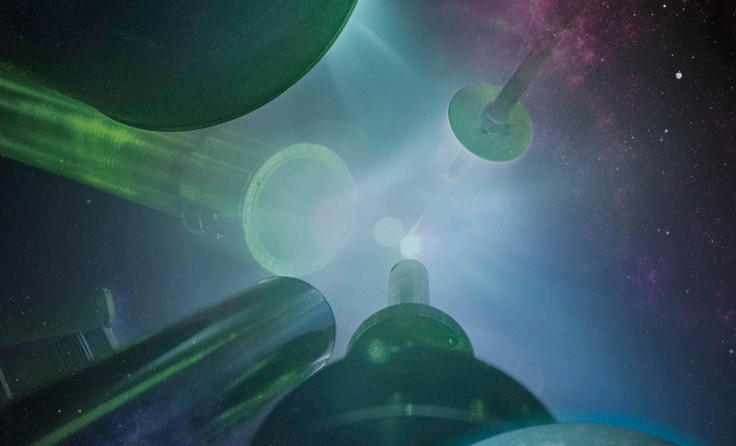Lab recreates super-Earth and giant planet formations in laser experiments

Conditions deep inside exotic super-Earths and giant planets as also those during the violent birth of Earth-like planets have been created in the lab using laser-driven experiments.
The results show that mantle silicates and core metal have comparable melting temperatures above core-mantle boundary pressures of 500 GPa, suggesting that large rocky planets may have long-lived oceans of molten rock in their depths.
Planetary magnetic fields can be formed in this liquid-rock layer.
How much heat solids can sustain before melting under pressure determines a planet's internal structure and evolution. This is what has been measured directly in the laboratory by researchers from Lawrence Livermore National Laboratory, Bayreuth University (Germany) and University of California, Berkeley.
They reveal the unusual properties of silica under the extreme pressures and temperatures prevalent during planetary formation.
The team measured the melting temperature of silica at 500 GPa (5 million atmospheres), a pressure comparable to the core-mantle boundary pressure for a super-Earth planet (five Earth masses), Uranus and Neptune.
"Our research suggests that silica is likely solid inside Neptune, Uranus, Saturn and Jupiter cores, which sets new constraints on future improved models for the structure and evolution of these planets," physicist Marius Millot and colleagues from Bayreuth University says.
The work was possible thanks to a breakthrough in high-pressure crystal growth techniques at Bayreuth University in Germany. The team managed to grow millimetre-sized transparent polycrystals and single crystals of stishovite, a high-density form of silica (SiO2) usually found only in minute amounts near meteor-impact craters.
By subjecting the crystal to extreme heat and pressure in laser experiments, the planetary formation conditions were recreated.
"Stishovite, being much denser than quartz or fused-silica, stays cooler under shock compression, and that allowed us to measure the melting temperature at a much higher pressure," Millot said.
"Dynamic compression of planetary-relevant materials is a very exciting field right now. Deep inside planets hydrogen is a metallic fluid, helium rains, fluid silica is a metal and water may be superionic."
Millot and colleagues plan to study the exotic behaviour of the main planetary constituents using dynamic compression for a better understanding of the formation of the Earth and the origin of life.
© Copyright IBTimes 2024. All rights reserved.






